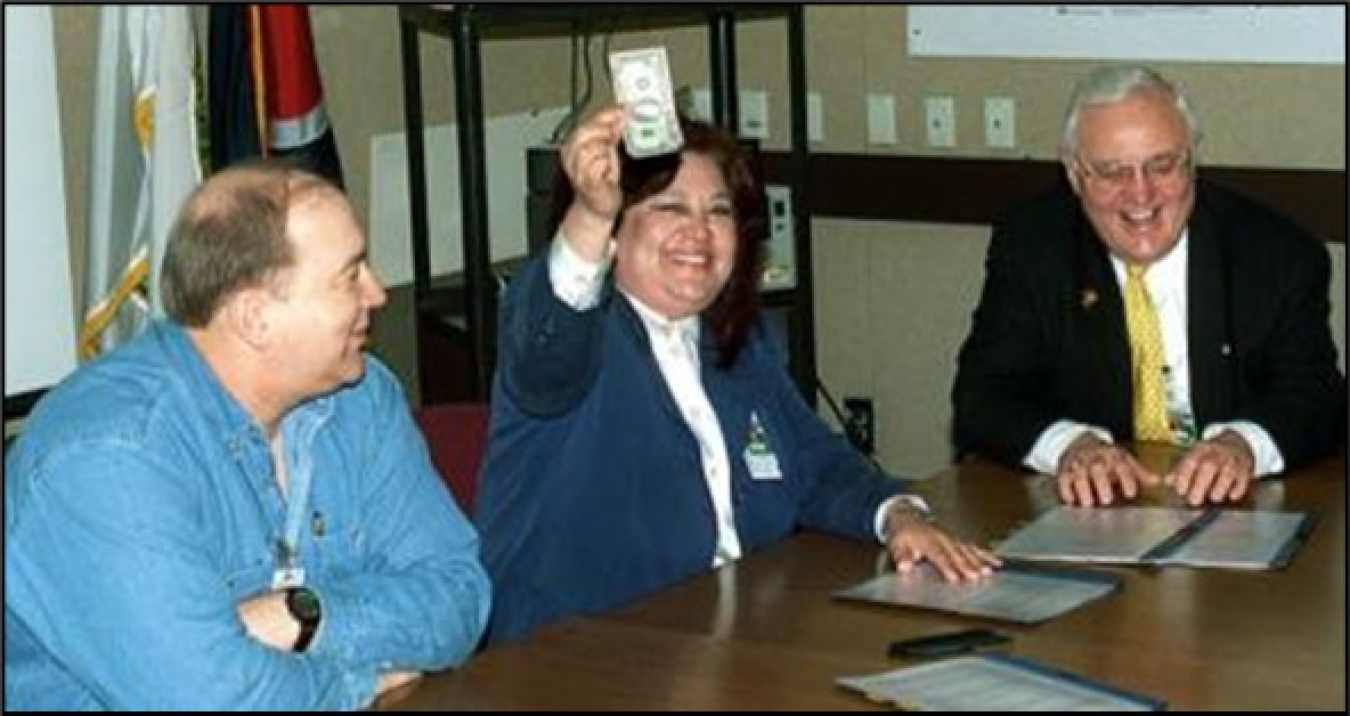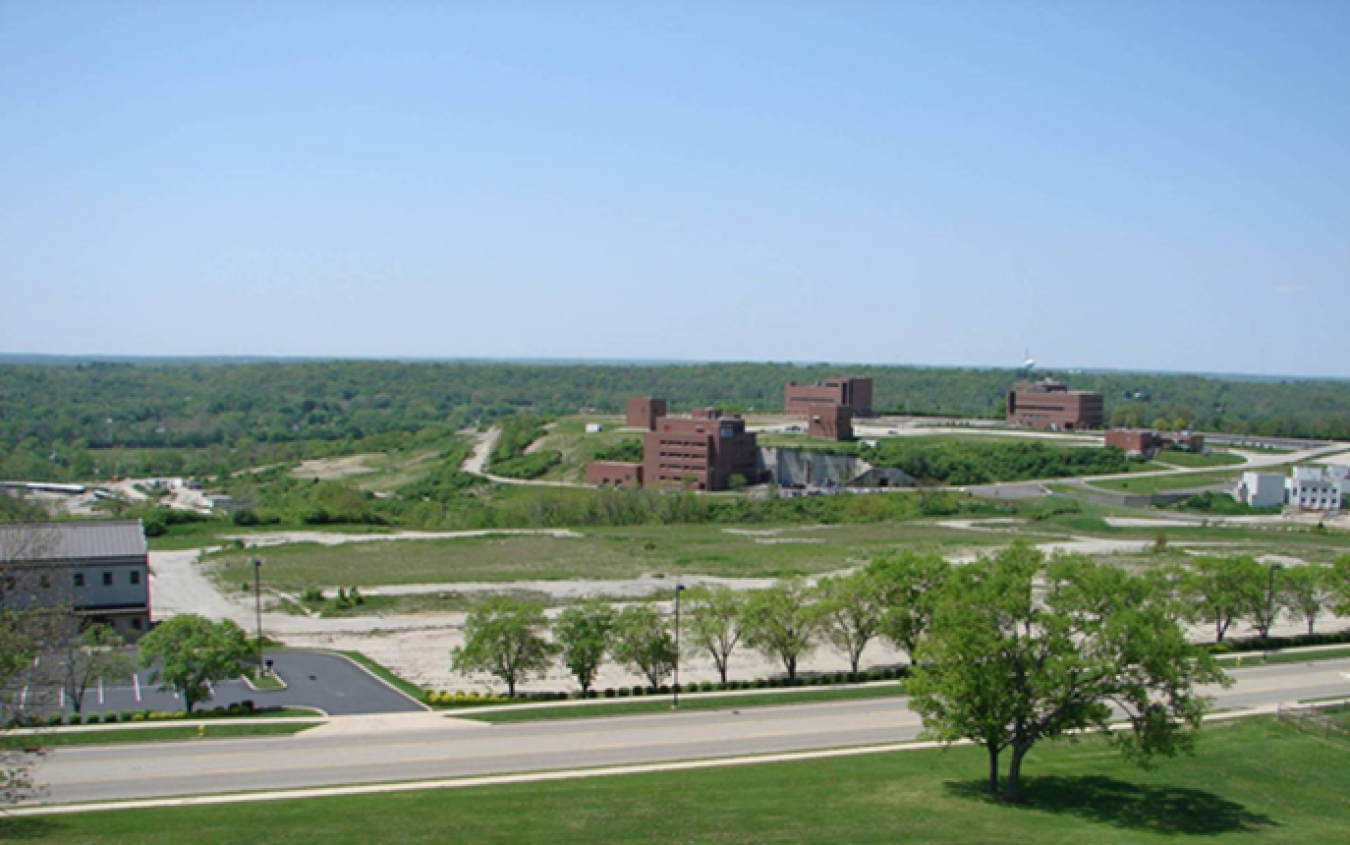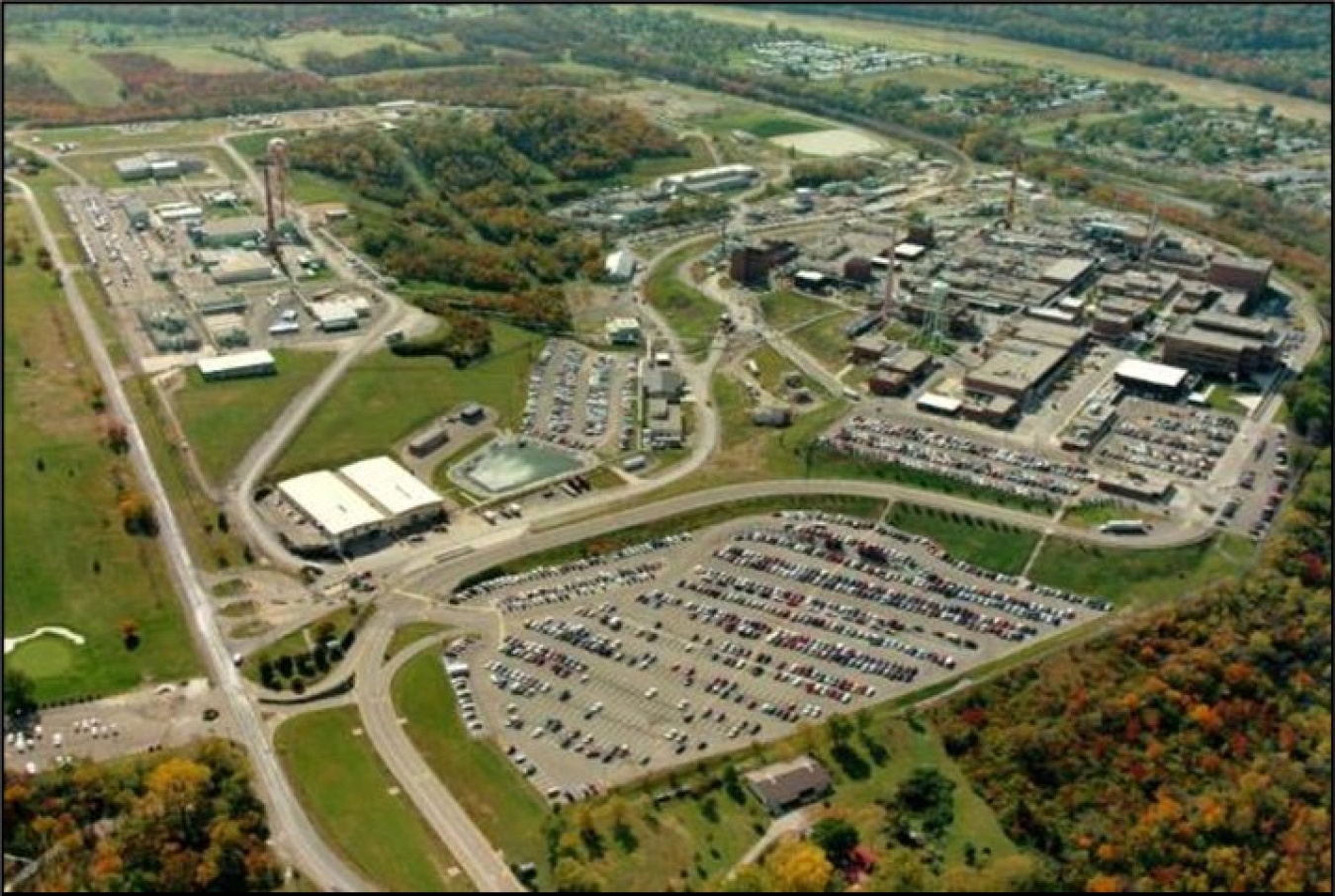Property Acquired by Government for Cold War Weapons Plant Returned to Community after Nearly Eight Decades
September 29, 2025In the waning days of the Manhattan Project, the U.S. government needed to find a suitable place to build an underground, bomb-proof facility to construct initiators for nuclear weapons. They found what they were looking for among the rolling hills of Miamisburg, Ohio, farmland. Construction began in 1947 on what would become the first facility built for the U.S. Atomic Energy Commission. Named after a large Native American mound nearby, the Mound plant supported national defense throughout the Cold War.
With its mission long since complete and the site cleaned up, on Friday, Sept. 26, the U.S. Department of Energy’s Office of Legacy Management facilitated the transfer of the last remaining parcel of government-owned land at the site to the Mound Development Corporation (MDC) to become part of a thriving business park. After nearly 80 years, government lands are now back in the community’s hands.
“Today marks the successful conclusion of a chapter in the environmental cleanup of the site and redevelopment partnership,” said April Hauser, the Executive Director of the Mound Development Corporation. “DOE’s commitment to thorough remediation has given us something invaluable – cleaned, developable land in the heart of our community. This final parcel completes the puzzle, allowing us to move forward with comprehensive redevelopment plans that will honor the site's scientific legacy while building our economic future."
“For more than 30 years, EPA has worked closely with the DOE and other partners to ensure the effective removal, remediation, and monitoring necessary to return the site to the community,” stated Anne Vogel, U.S. EPA Region 5 Administrator. “The Parcel 9 investigation and cleanup is a great example of federal and state partnership to safeguard the environment while achieving the Mound Development Corporation’s goals for reuse and redevelopment.”
“Transferring the final parcel of land to MDC is the result of unparalleled commitment from local, state, and federal partners,” Ohio EPA Director John Logue said. “The property is a tremendous asset to the community that will soon welcome new businesses to the area.”
From the Dayton Project to the Mound Plant

During nation’s race to build the world’s first nuclear weapons in the midst of World War II, reactors in Oak Ridge, Tennessee, and Hanford, Washington, sent irradiated bismuth to Dayton, Ohio, where it was used to make polonium-beryllium neutron initiators as part of the Manhattan Project.
Charles A. Thomas with Monsanto Chemical Company had the lead for what became known as the Dayton Project. The new work quickly outgrew Monsanto’s Central Research Department in town. Eventually, the Dayton Project took over multiple properties throughout the city, including a former theological seminary, as well as playhouse in the nearby residential community of Oakwood. The Dayton Project succeeded. The initiators went to Los Alamos, New Mexico, for use in plutonium bombs, including the one dropped on Nagasaki, Japan.
Even before World War II ended, it became clear that a centralized facility dedicated to initiator work would need to be built. Farmland in Miamisburg was chosen because it was close to the current workforce and it had hillsides that could be built into for security. The largest portion of land, nearly 90 acres, was purchased from William F. Mobley for $32,000.
From the Arms Race to the Space Race
As the Cold War arms race accelerated , the Mound Plant continued to support the weapons complex, manufacturing a variety of nuclear weapons parts, including initiators, cable assemblies, explosive detonators, and electronic firing sets. The facility’s work eventually expanded to include stable isotope separation, fossil fuels research, and tritium recovery. Notably, the site pioneered the development of nuclear batteries, known as radioisotopic thermoelectric generators, or RTGs, that provided electrical power to spacecraft such as Voyagers 1 and 2 and Galileo. At its peak, the Mound plant encompassed 116 buildings and employed more than 2,500 highly skilled workers.
From Closure to Cleanup

With the end of the Cold War, the Mound plant’s defense work wound down and its mission shifted to cleanup. At about the same time, the U.S. Environmental Protection Agency placed the site on the National Priorities List due to groundwater contamination by volatile organic compounds.
Cleanup work began in 1993 in accordance with two federal laws — the Comprehensive Environmental Response, Compensation, and Liability Act (CERCLA), commonly known as “Superfund,” and the Resource Conservation and Recovery Act (RCRA). The laws provided the regulatory framework for cleanup and the continuing long-term stewardship of the site.
Uniquely among DOE cleanup sites at the time, the community envisioned the Mound site becoming a business park after cleanup. DOE, the U.S. Environmental Protection Agency, the Ohio Environmental Protection Agency, and the City of Miamisburg worked closely together towards that goal.
To maximize the input from the community, the city created the Miamisburg Mound Community Improvement Corporation (MMCIC) and chartered the Mound Reuse Committee as an independent community advising board.
A leasing agreement signed in late 1993 between DOE and the MMCIC — which became the Mound Development Corporation (MDC) in 2011 — allowed for the immediate commercial use of unassigned site buildings that required no remediation. This became the first step of the Mound 2000 process — an innovative remediation approach that divided the site into nine discrete land parcels, with each parcel remediated separately to CERCLA industrial use standards.
“Dividing the site into separate parcels greatly expedited the beneficial reuse of the site,” said Mound LM Site Manager Tiffany Drake. “Each parcel could be remediated to the industrial use standards and with Institutional Controls specific to that parcel. The parcel could then be used commercially while remediation continued in the other parcels.”
In 1998, DOE entered into a sales contract for the Mound property with MMIC for the nominal amount of $10. The sales contract paved the way for transferring discrete parcels of the site to MMCIC as they were approved for release by the state and federal regulatory agencies for reuse as part of a new Mound Business Park. In turn, MMCIC and its successor MDC have sold some of the parcels to private industry and investors.
Completing the Circle, Opening the Future
Nearly eight decades after the Mound plant opened its doors, the site is now home to the successful, vibrant Mound Business Park. Private companies continue the leading-edge work pioneered in the previous decades, furthering a legacy created by the former Mound plant’s scientists, engineers, and technicians.
DOE Legacy Management’s commitment at the Mound site, and at sites across the nation, remains focused on protecting communities and the environment, while optimizing the use of lands. “DOE is pleased to complete the transfer process with MDC,” said Drake, “and we will continue to fulfill our long-term responsibilities at the site.”
With the return of the last remaining parcel of federally owned land to the MDC, Legacy Management has helped return the land back to the local community.
“This final parcel completes the puzzle, allowing us to move forward with comprehensive redevelopment plans that will honor the site's scientific legacy while building our economic future," noted Hauser.



